This guide is designed to help you understand the roads you’re driving on and the laws that you should be aware of. Some of these will be obvious to you, we hope, but there are some other less-known ones that we think you also need to know as well.
In this piece we will look at the documents required to drive, what you should keep in the car, road signals and signs, general laws to know, rules on speed, rules on parking, laws around other road users, laws for vehicle maintenance, laws for accidents,and driving etiquette rules.
There are a number of documents you’ll need before you can drive a car on the UK roads and these are:
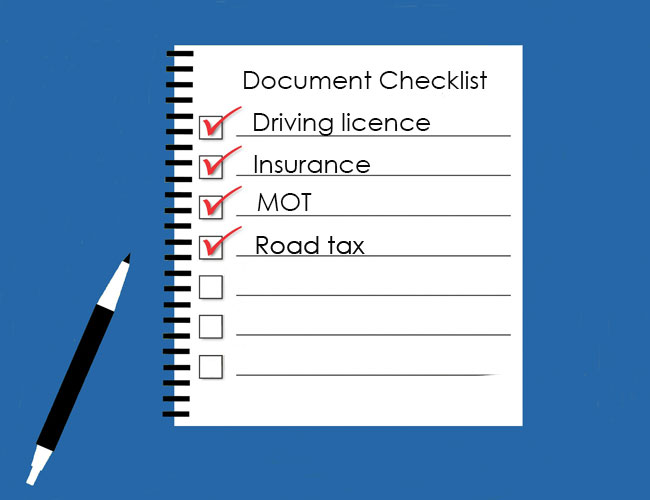
Unlike other countries the UK does not currently have a law for essential items that you should keep in your car, but it is recommended you keep a few key belongings there like a warning triangle and high-vis jacket which are both useful in the event of an accident.
For a more details breakdown of what we recommend keeping in your vehicle then take a look at this article of our top 10 essentials to keep in the car.
There are a number of different types of road signs and signals that you need to be aware of when driving.
In the UK there are three main style of road signs that are based on the shape of the sign.
Circular signs give orders that legally must be followed.
If they have a red border around them then it is something you must not do.
If it is a blue circle then it will give an instruction, like turn left ahead.
Speed limits are also shown in a circle.


Triangular signs give warnings and they tend to have a red border around the edge to highlight the danger they are warning of.
Rectangular signs give you information.
On motorways these signs will be blue, on primary roads they’ll be green and on minor roads they will be white.
Rectangular signs are also used to indicate bus lanes, cycle lanes or areas where restrictions are in place for example congestion charge zones.

For a more comprehensive look at the road signs you’ll encounter in the UK just click here to see our guide on them.
There are also a number of signals on the road you will need to obey.

In the UK most traffic lights have a red, amber and green. You must slow down and stop when it is an amber light unless it is unsafe to do so and come to a complete stop when it is a red one. Sometimes, an amber light will show alongside a green or red light to indicate that it is changing, as pictured above.
Some traffic lights might also have directional arrows for turning traffic, or a separate box for bikes and buses. You should only follow these lights if they apply to your vehicle and lane of traffic and be careful not to follow another light.
Traffic lights can be used at pedestrian crossings, junctions, and on larger roundabouts.
You might also encounter a railroad crossing, which does not have the traditional three lights but instead has a rectangular sign with three flashing lights, the top two will usually be red and the bottom amber. When these are flashing and the barrier is coming down across the road you must stop.
As smart motorways become increasingly common we are seeing more and more versatile lane control signs that use lights and signals to indicate a lane closure or variable speed limit change across the carriageway.
When you are learning to drive you will be taught about road signs and signals that you will encounter but it doesn’t hurt to refresh your knowledge on these.
You can find the most common and the rules that relate to them in the Highway Code.
UK road laws cover a wide and extensive range of areas of driving, road and vehicle usage which is why there are so many of them. In this guide we’re going to look at a few areas to give you an insight into a selection of these but it is not a comprehensive guide to them all.
Some key laws you should be aware of are:
If you have a medical condition that could affect your driving, then you will need to notify the DVLA.
There are more conditions that the DVLA need to be made aware of than you might think and these include:
There are additional illnesses that you will also need to tell the DVLA of if they affect your driving, or it meets particular conditions as defined by the DVLA. These include conditions like agoraphobia, eating disorders, blackouts or fainting, cancer and ADHD.
This is just a few of the conditions that need reporting to the DVLA and is not an exhaustive list. You can find out if a medical condition needs reporting to the DVLA on the government’s website here.
If you have any surgery or a broken limb and this prevents you from driving for longer than three months, then you will need to let the DVLA know. You will also need to tell the DVLA of any eye-sight condition that affects your ability to pass the standard eyesight test.
Another thing you will need to notify the DVLA of is if you have misused prescription drugs or used illegal drugs.
If you have a condition that should be reported and do not do this then you can face a fine of up to £1,000 if involved in an accident.
You will also need to make your insurers aware of any medical condition that you have to notify the DVLA of.
There are a number of laws on speed in the UK as every road has a speed limit that must be obeyed.
A maximum speed limit is not a target or always an achievable speed depending on driving conditions, which includes the road condition, weather, and other road users to name a few factors.
A speed limit is usually a maximum speed but there are some places where a minimum limit will also be in place, for example, in a long tunnel where it would be dangerous to be for a longer time period and going slowly creates more emissions in the enclosed space.
A minimum speed limit will be signposted differently, with white numbers on a blue background and when the minimum limit ends there will be another but with a red diagonal line through it to indicate the limit no longer applies.
In general, unless otherwise signposted, speed limits in the UK are up to 30 mph in built up areas, 60 mph is non-built up areas and up to 70 mph on motorways and dual carriageways.
You might see a national speed limit sign and depending on the road you are driving on when you see this the above limits will apply.
These are the maximum speed limits for vehicles travelling on the road but you should be aware that some may be subject to lower limits. Those towing a caravan for example are not legally able to reach 70 mph.
Vehicles can often travel faster than the maximum speed limit and so you will need to keep an eye on the speedometer when driving at fast speeds.
Some vehicles have a cruise control function and so can keep you below the speed limit, these can be helpful to use but we recommend only using them when you are not in heavy traffic.
To find out more about how you can reduce your speed and stay safe take a look at this article.
In the UK if you go one mile over the speed limit then you are technically speeding and can be held legally accountable. However, the National Police Chiefs Council (NPCC) advises a 10% plus 2 guideline.
This is only a guideline though and the police can use their discretion, so it is best not to go over the limit at all.
If you are caught speeding, then the minimum penalty is usually a £100 fine and three points on your licence.
In some areas for minor speeding offences, the police may offer you a speed awareness course instead, though you will have to pay for this yourself and the cost is typically between £80 and £100. To be accepted on the course you will need to admit to driving the speeding vehicle.
Taking a course will mean you will not get the points on your driving licence but you will need to have completed it within 12 weeks of the offence.
If you have previously attended a speed awareness course in the past three years then you will not be able to do another one, even for a minor speeding offence.
For more serious speeding offences you might get a court summons, and you can also decide not to accept a fixed penalty and take your case to court. In the event that you end up in court then the magistrate will have to follow sentencing guidelines which are divided into three bands:
These penalty bands depend on the offence and mitigating circumstances but in general will fall into the categories below.
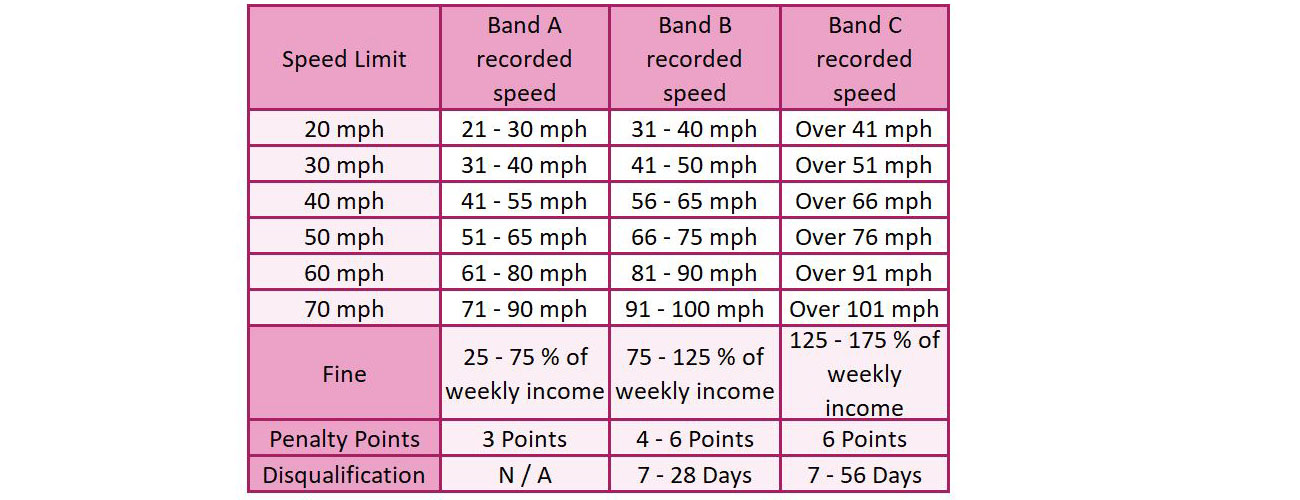
You are likely to receive a higher penalty for speeding in poor weather, near a school, in a highly pedestrianised area or heavy traffic, if you’re towing a trailer or caravan, if you have passengers, if you’re driving a lorry, bus or taxi and whether you have previous offences.
The magistrate will also take into account factors like whether you had a genuine emergency that forced you to drive faster, a clean driving record, and if you show clear remorse and good character.
There are cases when you may be able to dispute the ticket in court, these include if there are obscured signs on the road, you can prove you weren’t driving or there are missing details on the ticket.
A speeding offence might also lead to a change in your insurance costs and you will need to notify your insurance provider if you are given points on your licence.
Not only is speeding an offence but driving too slowly can also be classed as one.
Under driving without due care and attention if you are driving slowly that your speed could be deemed a risk that endangers other drivers then you can get an on the spot fine of £100 and three points on your licence, and if you’re taken to court this can rise to a £500 fine and nine points on your licence.
There are very few cases of drivers being fined for driving too slowly, and those that are, are usually on motorways, dual-carriageways and fast-moving B-roads.
When you’re not driving your car is in a stationary parked position, which is why there are a number of rules and regulations in UK law that cover parked vehicles as well as moving ones.
We think it's important to know the laws around parking your car.
In this section we’re going to explore some of the most important ones in three areas; where you can park, parking at night and sleeping in a parked vehicle.
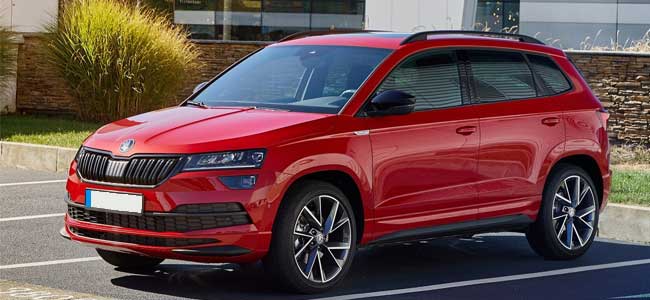
Around the UK there are a number of different places you can park. These are:
When parking there are a few general rules you should obey. Whilst not all legal it is considered good practise to follow these:
As a whole, it is accepted in the UK to park on pavements, but there are a couple of exceptions.
It has been illegal to park on any pavement in London for over 40 years and if you do so you can receive a fine of up to £70.
London is currently the only city or town that expressly forbids parking on any of their pavements, but it is also illegal to park on a pavement where road signs prohibit it.
If you do need to park on the pavement to avoid being an obstacle for road traffic, then we advise leaving enough room for a pedestrian to still use the footpath.
Please note that some pedestrians may be upset if you block their way, even if you leave space for a person to pass by your vehicle, as those using a wheelchair or pushchair require a wider space and may not be able to utilise unpaved space on the other side of the path in the same way as those on foot.
There are some slightly different rules on parking at night as darkness reduces visibility for all drivers.
Rule 248 of the Highway Code says that you must not park on the side of a road facing against the direction of the traffic, unless you are in a recognised parking space. This is as you will not be as easy for oncoming drivers to see because your rear reflectors will not be facing their direction and therefore your car will be a potential hazard for other road users.
You can receive a fine of up to £1,000 in a car or small vehicle while a goods vehicle or one with more than eight seats can be fined up to £2,500.

It is not always illegal to sleep in a parked car but there are circumstances when it is.
You cannot sleep in a parked car anywhere, even if key is not in the ignition and you are not in the driver’s seat, when you are intoxicated or high on drugs. This is because you can still be prosecuted for being drunk in charge of a motor vehicle, which results in a large fine and up to 10 points.
Otherwise, you can sleep in your vehicle if it is legally parked in a safe location, where it does not cause a hazard for other road users.
Safe locations include a service station or legal roadside rest area, a street without restrictions or a car park. However, you should be aware of some restrictions that might be in place at these locations like a free parking time limit at motorway service stations or gates on car parks.
Where avoidable we recommend not sleeping in your vehicle, but there are times when you should not continue driving due to tiredness and you have no other option. A few recommendations we have if you do need to sleep in your vehicle are:
You might also find it useful to keep a bottle of water, torch, snack and blanket in the vehicle in case you do need to take a rest break.
Cars are not the only road users and so if you are driving then you should also be aware of other road users and not just those in cars.
There will be larger vehicles like lorries, buses and tractors who may not be able to achieve the same speeds as you and will have a wider turning circle and larger blind spots.
There will also be pedestrians, cyclists, and even horse that you may encounter. Again, you will need to make accommodations for these users which involve slowing down, passing with plenty of space and turning down your radio.
There are laws and regulations for all road users but as a driver you will usually be the one in charge of the faster or larger vehicle and need to make accommodations for them.
Not everyone is aware of or follows the rules for other road users either and so you shouldn’t always assume that they are going to act according to these.
You should always give pedestrians plenty of room when passing then, and slow down when you do so.
Pedestrians are advised to walk on the right hand side of the road for the direction they are travelling in so will usually be in the lane of oncoming traffic to increase their visibility to traffic. With this in mind you should also slow down when approaching them on the road.
The majority of the time though pedestrians will be on a footpath alongside the road, it’s only when this is not available that they will be walking on the road.
You should be cautious on wet days as splashing a pedestrian by driving too fast through a puddle can lead to a £100 fine and three penalty points on your licence as it’s an offence under section three of the Road Traffic Act 1988 for driving without reasonable consideration for other persons.
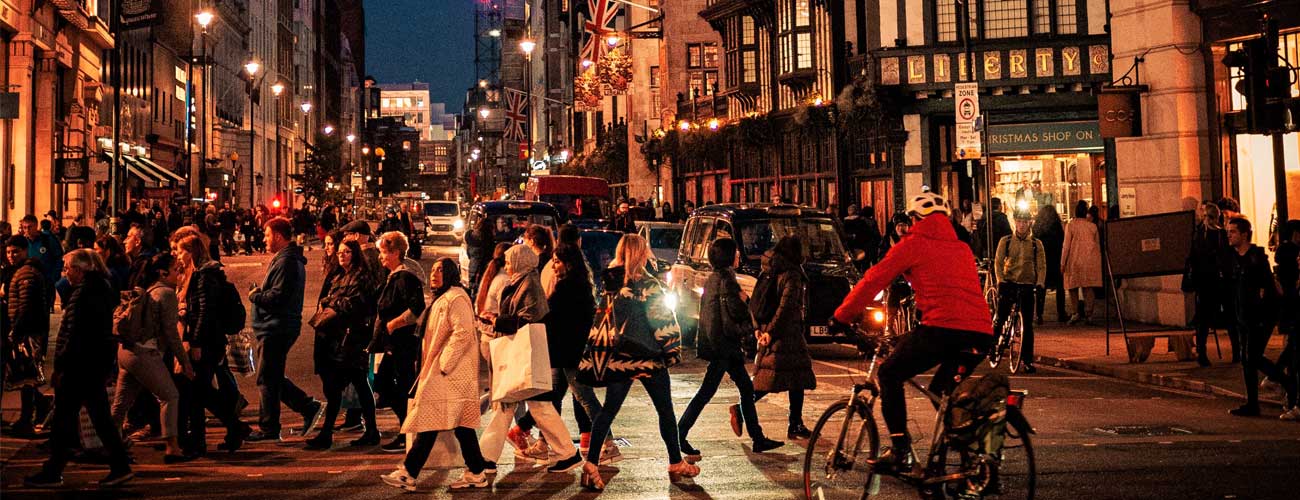
Legally cyclists should be using the road and not the footpath, unless it is a bridleway, and they have the same rights as any other road user. This is applicable to all aged cyclists so even children should technically be riding on the road.
Some roads have a cycle lane and it is an offence to drive in a mandatory cycle lane, marked by a solid white line, and you now might be fined up to £130 for doing so.
Cyclists are entitled to use the full width of the road, and many will sit towards the centre of the lane as this helps them avoid opening doors on parked cars and drains and to make it easier to take a right turn.
They are also allowed to cycle two abreast, though it’s recommended they cycle in single file on busier roads and around bends.
You should give them the same consideration as you would any other vehicle when they are using the road and not get annoyed if they are doing any of the above behaviour, give way to them at junctions and roundabouts as you would anyone else.
Lane splitting, weaving in and out of lanes to overtake, is legal for cyclists to do and so you should be aware that they may approach from either the left or right hand side of your vehicle.

You might also find this article useful, as it’s full of tips to help you stay safe around other road users and ways that you can help them to remain safe as well.
In the UK there are speed restrictions for any vehicle that is towing and they are restricted to 10 miles below the national speed limit, to 50 mph on single carriageways outside of built up areas and 60 mph on a dual carriageway or motorway.
They also cannot use the outside lane of a motorway if there are three or more lanes of traffic and must stick to the two left hand lanes. If you are caught using the third lane then you can be fined up to £2,500 and receive three points on your driving licence.
You must keep your vehicle maintained in line with the manufacturer’s guidelines and regularly serviced in line with these too.
Your vehicle must have a valid MOT and if you are caught driving a vehicle without one you will be fined up to £1,000.
If your vehicle fails an MOT and is deemed dangerous by the MOT test results then you can be fined up to £2,500, receive three points on your licence and even be banned from driving.
For more information on how you can keep your vehicle road worthy take a look at this article.
We have an entire article on what to do if you’re involved in an accident but we wanted to take a moment here to advise on two legal requirements.
You must stop if you are involved in a car accident, even if it is with a parked vehicle or road furniture like a fence.
You must also notify the police of any road traffic accident. Depending on the severity and circumstances of the accident this does not always need to be done at the scene but must be done within 24 hours.
If it is not an emergency, then you can call the police on 101 to notify them of the accident.
This section will look at a few miscellaneous areas of law and rules for the road that we think it’s important for you to know.
Though you might not think swearing from your car is a crime, you can actually be fined up to £1,000 for road rage and swearing at other road users under the Crime and Disorder Act of 1998.
Similar to swearing you might not think that your music can get you into trouble but if it’s loud enough to be considered a distraction to your driving then you could receive a £100 fine and three points on your licence.
If you’re asked to turn down the music and refuse then your car could also be seized by the police.
Similar to loud music, if you are stopped and are found to be eating or drinking while driving then you could receive a £100 fine and three points on your licence if the police believe that doing so has distracted you from the road and would be classed as careless driving.
We all know that unless you’re overtaking then you should be in the left-hand lane but there are many motorists who do not follow this rule. This isn’t just considerate road behaviour though, it’s actually a law. If you are caught unnecessarily staying in the middle lane when there is space on the left then you can receive a fine and up to three points on your licence for careless driving.
Tailgating is a term used to describe driving very closely to the vehicle in front of you and is a dangerous driving habit. If you are caught tailgating then the police may issue you with a fine and you could receive up to three points on your licence for careless driving.
Though it might seem like the nice thing to do you should not warn approaching motorists of any speed traps.
If you are found to be warning others of an upcoming speed trap then you could be considered to be “wilfully obstructing a constable in the execution of their duty” which comes with a £1,000 fine.
We all know that when you hear an approaching siren or see blue flashing lights then you need to move in order for the emergency vehicle to get through the traffic as quickly as possible.
However, you should not break any of the existing road laws in order to do so, this includes going into an active bus lane or through a red light. Despite the emergency vehicle this is still considered to be breaking the laws of the road and you could be penalised for doing so.
Rule 112 of the Highway Code states that you should never sound your horn aggressively. You must not use your horn while stationary on the road, or when driving in a built-up area between the hours of 11.30pm and 7am, except when another road user poses a danger.
If you are caught using your horn inappropriately then you can be fined up to £1,000.
Rule 229 of the Highway Code says that you must demist and clear all your mirrors, clean your lights, make sure your number plates are visible and that all windows are clear before you set off on any journey.
If it has been snowing and there is snow on your roof then this will also need to be cleared off before you can drive, as if it falls onto the windscreen it will block your view endangering you and other road users. It might also fly off the roof if you are driving at speed and pose a danger to other road users. You could be stopped and charged with driving without due consideration or using a motor vehicle in a dangerous condition which could result in a fine and three points on your driving licence.
It might surprise you to know that idling with your engine running unnecessarily is against the law.
Under section 42 of the Road Traffic Act 1988 and Rule 123 of the Highway Code you should not leave your engine running unnecessarily while stationary on a public road.
If you’re caught then you could be fined £20, and if in certain parts of London this rises to £80.
This is only applicable on public roads and doesn’t include being stuck in traffic, although it’s not clearly defined whether running the engine to keep the car heated is necessary.
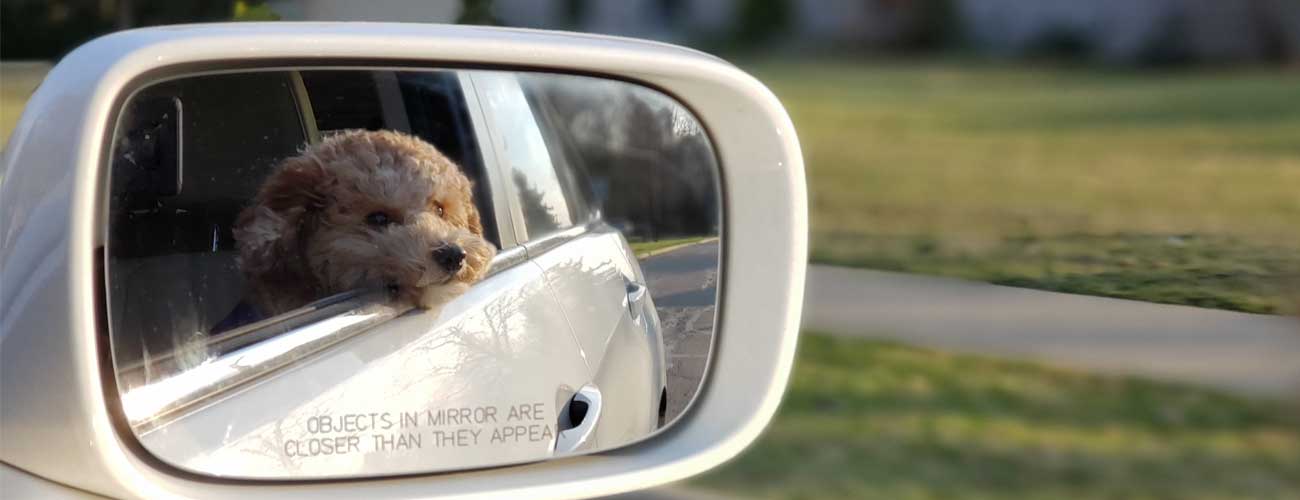
There is no laws on unrestrained animals in a moving vehicle, however it is strongly recommended that all pets are properly restrained when travelling to avoid them distracting you from the road.
You could be charged with driving without due care if you are caught by police and found to be distracted by an animal which comes with a fine of up to £5,000 and nine points on your licence if your case is severe enough to be taken to court.
If you are involved in an accident and your pet is in the vehicle then you need to be aware that you must not let them out of the vehicle unrestrained, and to wonder around as this causes a potential hazard to other road users.
For more information on how to stay safe on the roads head back to our guides homepage or check out our blog for lots of great articles.
Check out one of our helpful guides or our explaination of leasing to get all your questions answered.
You can unsubscribe at any time